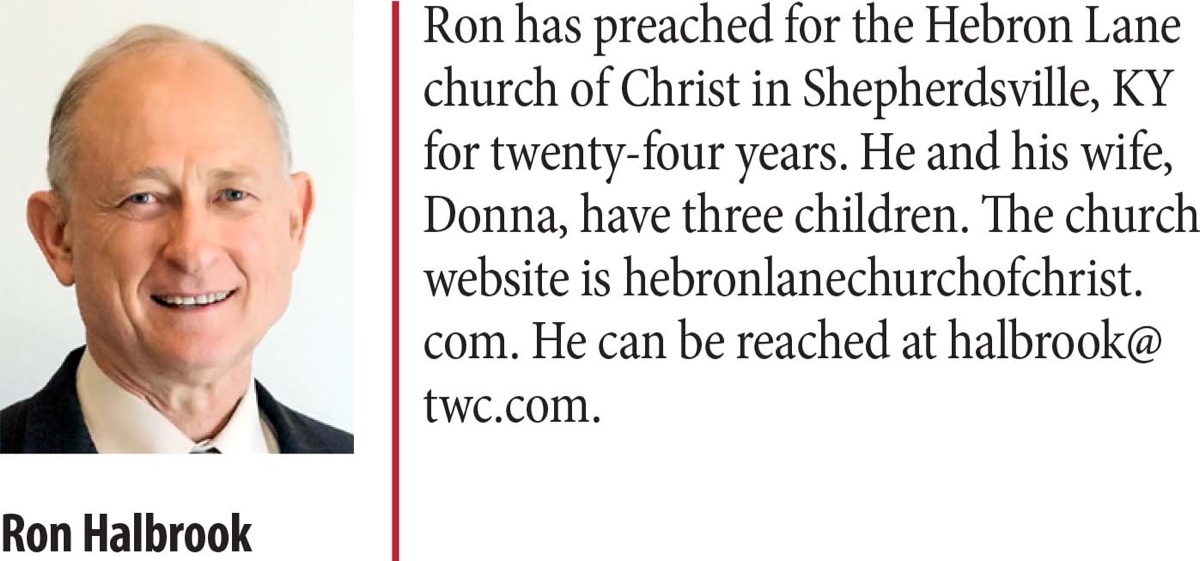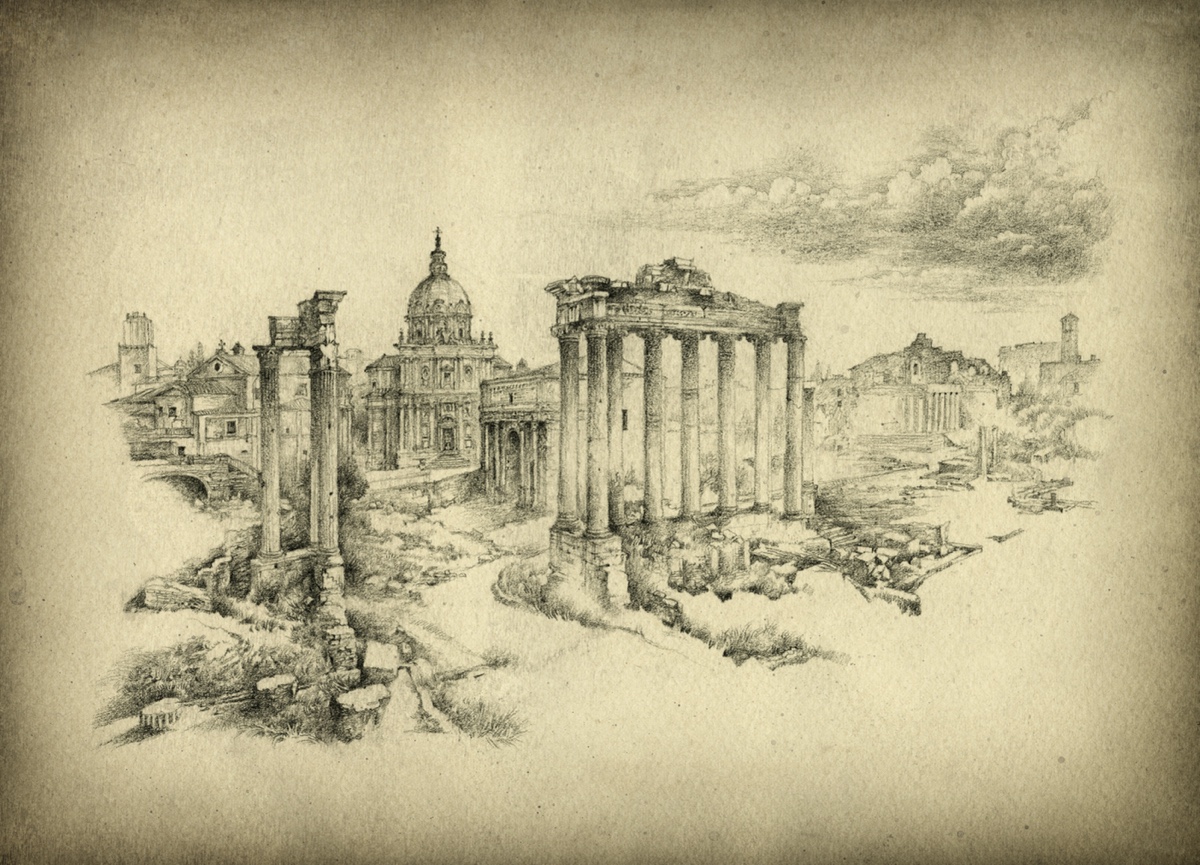By Ron Halbrook
Synopsis: “The Great City” which martyred saints in the book of Revelation is Rome, not Jerusalem.
Summary: Rome, not Jerusalem, is pictured in the book of Revelation as the executioner of saints who refused to worship the Emperor throughout the Roman Empire.
When the evidence pro and con is sifted, it becomes clear that Rome, rather than Jerusalem, is the threat to the early saints addressed in the book of Revelation. The first great threat to the church was the Jewish establishment in Jerusalem, to be sure, but Jesus predicted the utter fall and ruin of that power in Matthew 24:1-34. We can see how ferocious the Jewish attack was by reading the book of Acts.
As the gospel extended further out into the Gentile world, Satan’s use of Jerusalem was dwarfed by his hold on Gentile culture and religions, which put a far more powerful engine of destruction in his hands. After Jerusalem fell in AD 70, Satan concentrated his efforts on utilizing the powers of the Roman Empire to eradicate the church. The book of Revelation does not foreshadow the Jewish powers which attempted to destroy the church in its earliest decades, but the rising powers of the Roman Empire, which would focus on destroying the church throughout the Mediterranean world for the next three centuries. The internal evidences for dating the book about AD 96 as a prophecy of “the great city” of Rome as Satan’s citadel are compelling.
We learn in the early chapters of the book of Revelation that it was written to prepare the churches for the coming firestorm through which they would pass. We must consider why the seven churches of Asia are highlighted at the beginning of the book. Chapters 2-3 specifically address the seven churches of the province of Asia because that is precisely where the cult of emperor worship first became prominent. Christ gave those churches an assessment of their current condition, including strengths and weaknesses, in order to prepare them to pass through the upcoming storm.
The seven churches are located in a Gentile stronghold, not in Palestine. Jewish enemies are mentioned only in the letter to Smyrna, but the seven churches were primarily Gentile churches, not churches primarily composed of Jews. The Jews had no power to execute Christians in Smyrna, but they were guilty of betraying Christians to the Roman authorities who enforced emperor worship. History says Jews often compromised with the Empire by professing to worship the emperors in order to escape persecution, and even some Christians fell into the same trap rather than face martyrdom. Furthermore, history says there was no church at Smyrna during Paul’s lifetime.
John pictures Laodicea as a rich city, but it was utterly devastated by a major earthquake in AD 60/61 and could not have so quickly recovered to be referred to as rich in that same decade. The main point is to recognize these were Gentiles churches which the Lord was preparing for widespread persecution, which could be orchestrated and enforced by Rome but not by Jerusalem.
Revelation 9:13-21 pictures a rising threat to Rome from the east, crossing the borders formed by the Euphrates River, armies which would bring partial destruction to chastise the great enemy of the church. Rome, not Jerusalem, was constantly forced to send legions to push back invaders from Persia and Parthia. Later in Revelation 16:12-16 Rome’s final doom is forecast by the drying up of the natural protection afforded by the Euphrates River as her enemies unite to bring her downfall at the famed battle of Armageddon.
Revelation 11:8 pictures the dead bodies of martyrs “in the street of the great city, which spiritually is called Sodom and Egypt, where also our Lord was crucified.” Rome, not Jerusalem, was comparable to Sodom’s gross public embrace of immorality. Rome, not Jerusalem, was comparable to Egypt’s open embrace of idolatry and repudiation of the worship of the one true God. Rome was comparable to the Jerusalem which crucified Christ because it was exercising its power by executing followers of Christ. John is not referring to the literal populace of Sodom, Egypt, or Jerusalem but was exposing the wicked character of Rome by comparing it to the evils represented by those populaces.
This same wicked city, “the great city,” is repeatedly compared to Babylon (14:8; 16:19; 17:18, etc.). Rome, not Jerusalem, was a well-known symbol of idolatry combined with immorality combined with prosperity combined with ruthless world domination—another Babylon.
The harlot, which was the enemy of the church, sat on a monstrous beast with seven heads seated on “seven mountains” (Rev. 17:9). Coins of the era picture Rome, not Jerusalem, as resting on seven hills or mountains. It was proverbial throughout the world that Rome sat on seven hills. Rome was depicted in that way from ancient times, but Jerusalem was not.
Rome, not Jerusalem, was the “great city, which reigneth over the kings of the earth” (Rev. 17:18). Judea was under the foot of kings appointed by Rome, not vice versa. Many a Jew dreamed of a Messiah who would exalt Judea to rule over the kings of the earth, but the book of Revelation does not reflect that dream as a reality. In fact, the animus of the Jewish leaders against Jesus was largely driven by the fear that His popularity would cause uprisings which would bring down the wrath of Rome, thus causing them to lose what few powers were delegated to them by their Roman superiors (John 11:47-53). Jerusalem was one of the many servile cities in the Roman Empire, not the “great city, which reigneth over the kings of the earth.”
Max King’s Spirit of Prophecy wrecks the teaching of the New Testament in his efforts to identify “the great city” in Revelation as Jerusalem. He claims on pages 350-351 that eternal life just means a figurative resurrection which established the new kingdom of God and eternal death just means the kingdom was taken away from the Jews. To the contrary, eternal life is promised in heaven with God (1 Pet. 1:3-5) and the second death is eternal torment in hell with Satan and his angels (Matt. 25:40, 46; Rev. 21:8). In King’s efforts to twist the entire New Testament message so that it revolves around AD 70, he claims 1 Corinthians 15 does not refer to the resurrection of our bodies but to a spiritual resurrection which established the new kingdom. He says our promised resurrection already transpired by the church arising from the ashes of Judaism rather than our bodies being raised from the grave and changed into a body that will never die.
The foundation of our faith is not the events of AD 70 regarding the fall of Jerusalem but the death, burial, and resurrection of Jesus Christ which brings the promise of the remission of our sins, the resurrection of our bodies, and eternal life in heaven with God. This is the same promise given to the faithful martyred saints in the book of Revelation who were executed by the Roman Empire.
[Note for further study: The best and most helpful materials I have found in studying the book of Revelation are Robert Harkrider’s Revelation in the Truth Commentaries, and Dan King’s “I Saw Heaven Opened:” A Commentary on Revelation and also his commentary-workbook on Revelation which I have taught many times (available from CEI Bookstore / Truth Publications)]


